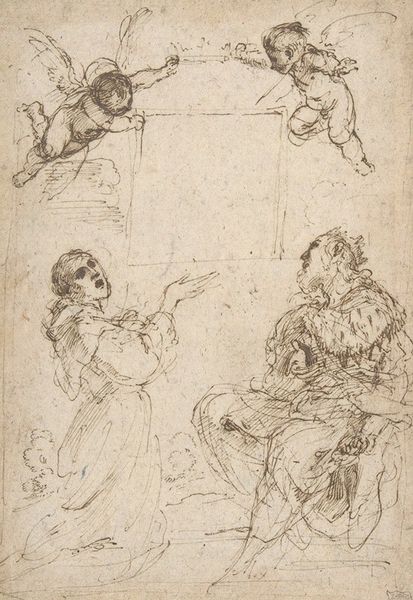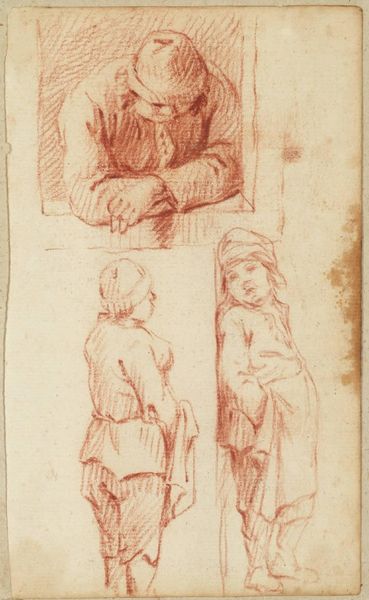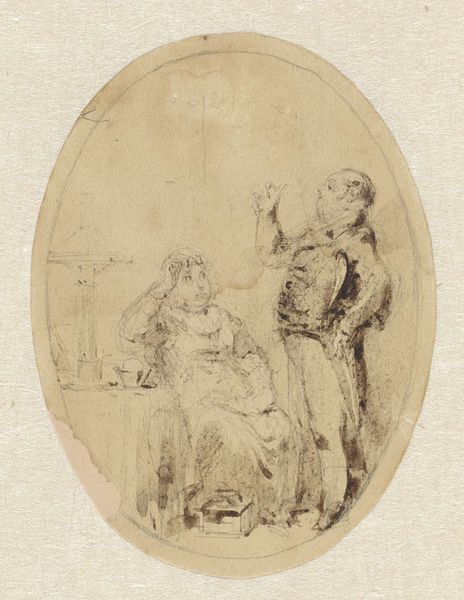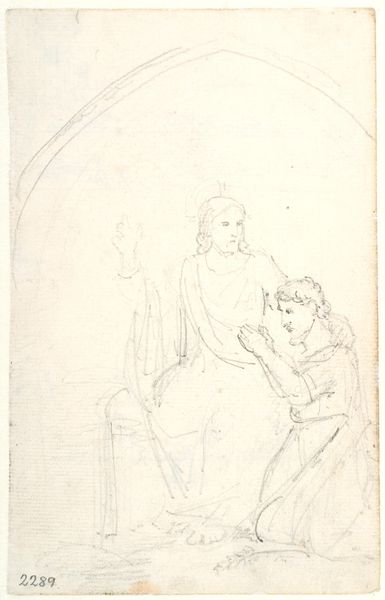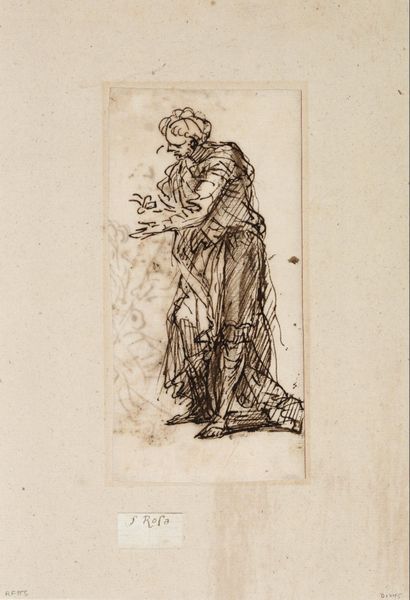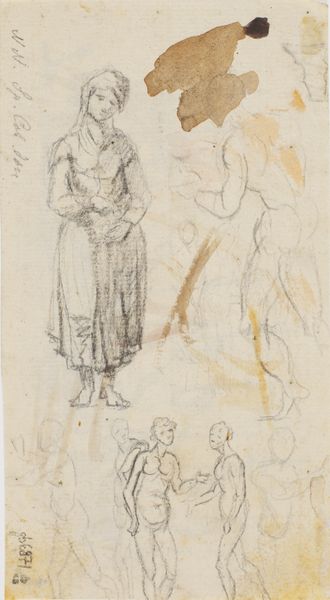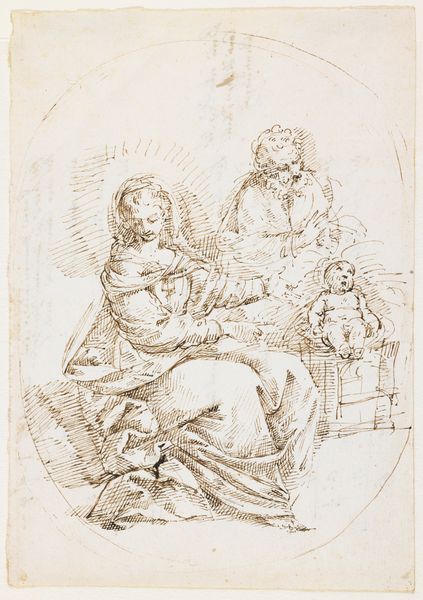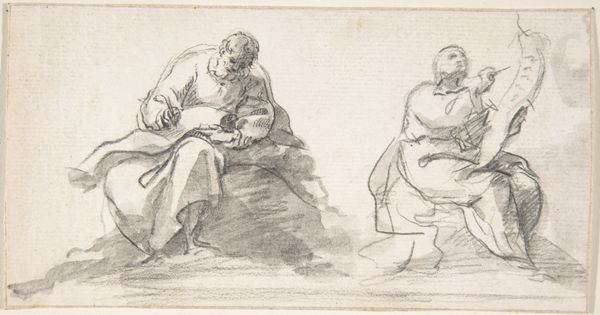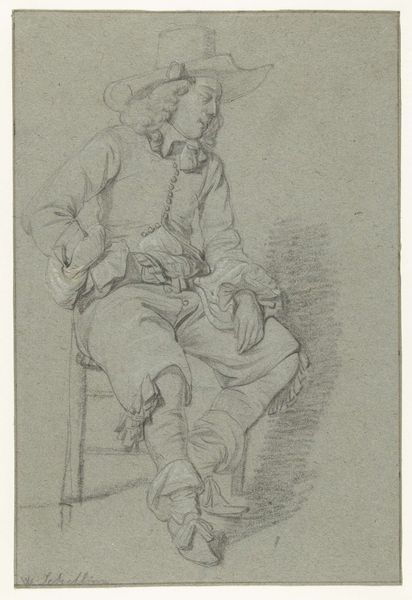
drawing, paper, pen
#
portrait
#
drawing
#
pencil sketch
#
figuration
#
paper
#
pen
#
genre-painting
#
history-painting
#
academic-art
Copyright: Public Domain: Artvee
Editor: So this is "Sheet of Studies: Seated Man, Head of a Dog, Seated Woman," dating to the 18th century by Claude-Joseph Vernet. It's a pen and pencil drawing on paper. It feels like a quick sketch, maybe preparatory work for a larger composition? What jumps out at you about this piece? Curator: Well, first, notice how Vernet uses this sheet to explore different figure studies and his approach to depicting various subjects. Given the social and artistic climate of the 18th century, it's interesting to consider how such sketches functioned. Was it purely for his personal exploration, or were these figures intended for later integration into history paintings or genre scenes? Editor: That's a great question. It feels so immediate and personal, almost like we're peering into his sketchbook. The dog, in particular, is quite endearing. Were these kind of figure studies common practice at the time? Curator: Absolutely. Academic art education heavily emphasized drawing from life and studying classical forms. Such sheets allowed artists to hone their skills in depicting anatomy, drapery, and expressions. Think of it as visual note-taking, informing his understanding of the world and feeding his imagination. Do you notice any specific conventions, or lack thereof, compared to the artwork displayed in academies? Editor: The figures feel less idealized than I would expect. They possess a certain…realism. Especially the man. He looks like he's just concentrating on the present moment, a mundane daily action, and the dog isn't exactly regal. Curator: Precisely. Vernet, while adhering to academic principles, appears to inject a touch of naturalism into these studies. This perhaps speaks to a broader shift occurring in the 18th century, where artists were beginning to move away from grand historical narratives towards more intimate and everyday subject matter. Consider how his market and audiences played a role in those shifting artistic focuses. Editor: So it is both personal practice, but with a strong cultural and commercial awareness? I never considered that, thank you! Curator: Yes. Considering the social and institutional aspects adds layers of meaning, wouldn't you agree?
Comments
No comments
Be the first to comment and join the conversation on the ultimate creative platform.
